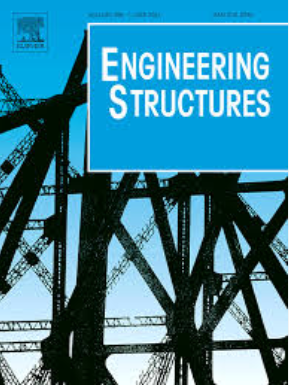OpenPyStruct: Open-source toolkit for machine learning-driven structural optimization
IF 6.4
1区 工程技术
Q1 ENGINEERING, CIVIL
引用次数: 0
Abstract
OpenPyStruct (Toolkit URL: OpenPyStruct, Repository URL: Data) is an open-source toolkit that provides finite element model based optimization frameworks for generating training data and machine learning models for global structural optimization of indeterminate continuous structures. The key machine learning feature of OpenPyStruct is its ability to optimize single or multiple arbitrary loading and support conditions. The framework utilizes multi-core central processing unit (CPU) and graphics processing unit (GPU)-enhanced implementations integrating OpenSeesPy for structural optimization. PyTorch is used for accelerated computations. Accompanying machine learning scripts enable users to train high-fidelity predictive models such as transformer with diffusion modules, physics-informed neural networks (PINNs), convolutional operations, and contemporary machine learning techniques to analyze and optimize structural designs. By incorporating state-of-the-art optimization tools, robust datasets, and flexible machine learning resources, OpenPyStruct aims to establish a scalable and fully-transparent engine for structural optimization by engaging the structural engineering community in this open-source toolkit.
OpenPyStruct:用于机器学习驱动的结构优化的开源工具包
OpenPyStruct (Toolkit URL: OpenPyStruct, Repository URL: Data)是一个开源工具包,提供基于有限元模型的优化框架,用于生成训练数据和机器学习模型,用于不确定连续结构的全局结构优化。OpenPyStruct的关键机器学习特性是它能够优化单个或多个任意加载和支持条件。该框架利用多核中央处理单元(CPU)和图形处理单元(GPU)增强实现,集成OpenSeesPy进行结构优化。PyTorch用于加速计算。随附的机器学习脚本使用户能够训练高保真的预测模型,例如带扩散模块的变压器、物理信息神经网络(pinn)、卷积运算和现代机器学习技术,以分析和优化结构设计。通过整合最先进的优化工具、强大的数据集和灵活的机器学习资源,OpenPyStruct旨在通过让结构工程社区参与这个开源工具包,建立一个可扩展的、完全透明的结构优化引擎。
本文章由计算机程序翻译,如有差异,请以英文原文为准。
求助全文
约1分钟内获得全文
求助全文
来源期刊

Engineering Structures
工程技术-工程:土木
CiteScore
10.20
自引率
14.50%
发文量
1385
审稿时长
67 days
期刊介绍:
Engineering Structures provides a forum for a broad blend of scientific and technical papers to reflect the evolving needs of the structural engineering and structural mechanics communities. Particularly welcome are contributions dealing with applications of structural engineering and mechanics principles in all areas of technology. The journal aspires to a broad and integrated coverage of the effects of dynamic loadings and of the modelling techniques whereby the structural response to these loadings may be computed.
The scope of Engineering Structures encompasses, but is not restricted to, the following areas: infrastructure engineering; earthquake engineering; structure-fluid-soil interaction; wind engineering; fire engineering; blast engineering; structural reliability/stability; life assessment/integrity; structural health monitoring; multi-hazard engineering; structural dynamics; optimization; expert systems; experimental modelling; performance-based design; multiscale analysis; value engineering.
Topics of interest include: tall buildings; innovative structures; environmentally responsive structures; bridges; stadiums; commercial and public buildings; transmission towers; television and telecommunication masts; foldable structures; cooling towers; plates and shells; suspension structures; protective structures; smart structures; nuclear reactors; dams; pressure vessels; pipelines; tunnels.
Engineering Structures also publishes review articles, short communications and discussions, book reviews, and a diary on international events related to any aspect of structural engineering.
 求助内容:
求助内容: 应助结果提醒方式:
应助结果提醒方式:


